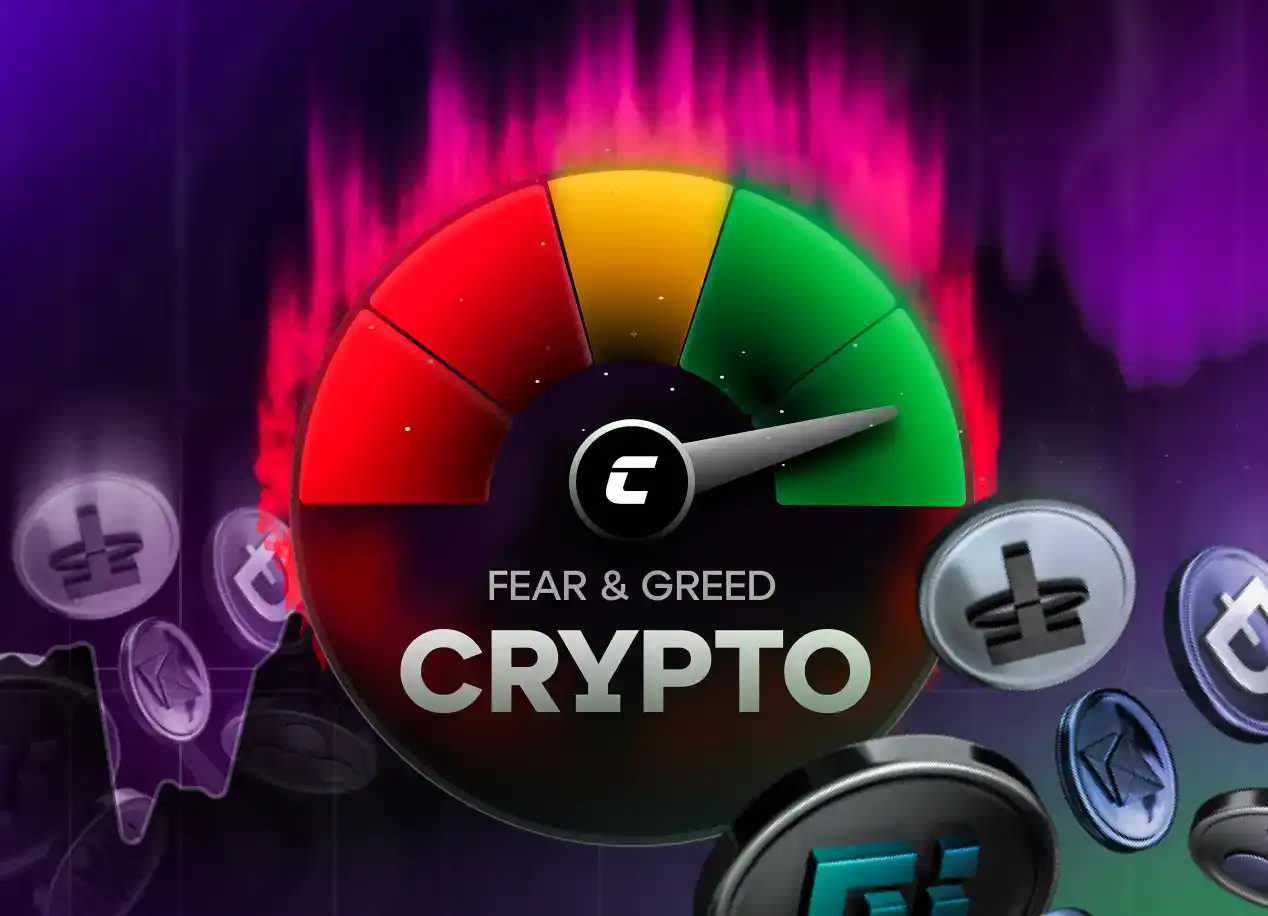
Введение
Крипто мир — это не только цифры и алгоритмы, но и море человеческих эмоций, от которых зависит каждое колебание рынка. Индекс страха и жадности выступает как важный показатель настроений участников рынка, представляя собой комплексный индикатор, который агрегирует различные данные рынка для оценки степени "жадности" или "страха" среди инвесторов и трейдеров. Этот индекс может иметь разные названия, такие как "Crypto Fear and Greed Index" или "Bitcoin Fear and Greed Index," и его целью является оценка настроений инвесторов в режиме реального времени.
История создания индекса
Концепция измерения эмоционального состояния рынка не нова и имеет корни в традиционных финансовых рынках, где аналогичные индикаторы, такие как индекс страха и жадности CNN Money для фондового рынка, использовались для оценки настроений инвесторов. В мире криптовалют, где волатильность и спекулятивные настроения играют еще более значимую роль, потребность в подобных инструментах оказалась еще выше. Индекс страха и жадности для криптовалют был разработан как способ квантификации эмоционального состояния рынка, собирая данные из различных источников, включая опросы, волатильность, объемы торгов, социальные медиа и тренды Google.
Создание индекса было мотивировано желанием предоставить инвесторам инструмент, способный сигнализировать о крайностях настроений, которые исторически совпадали с периодами рыночных разворотов. Таким образом, индекс стал не только средством для анализа текущего положения дел на рынке, но и инструментом, помогающим антиципировать значительные изменения в динамике цен.
Как работает индекс
Индекс страха и жадности основывается на анализе различных источников данных, которые в совокупности дают представление о настроениях рынка. Основные компоненты индекса включают:
- Волатильность: Сравнивает текущую волатильность цен сo средними значениями за предыдущие периоды, чтобы оценить, насколько рынок стабилен или нестабилен.
- Объемы торгов: Анализирует изменения в объемах торгов, поскольку рост объемов может указывать на повышенный интерес к рынку.
- Социальные медиа: Измеряет настроения в социальных сетях и на форумах, отслеживая, как общественность реагирует на развитие рынка криптовалют.
- Доминирование Bitcoin: Учитывает изменения в доле рыночной капитализации Bitcoin по отношению к общему рынку криптовалют, так как Bitcoin часто считается "безопасным убежищем" в мире крипто.
- Тренды Google: Отслеживает поисковые запросы, связанные с криптовалютами, что помогает выявить рост или уменьшение интереса к инвестициям в крипто.
Индекс рассчитывается ежедневно и выражается в числах от 0 до 100, где высокие значения указывают на "жадность", а низкие – на "страх". Это числовое значение помогает инвесторам лучше ориентироваться в текущих настроениях рынка, предполагая, когда может быть благоприятное время для покупки (когда преобладает страх) или продажи (когда на рынке жадность).

Что отражает индекс страха и жадности: рынок криптовалют или Bitcoin?
Этот вопрос не так прост, как может показаться на первый взгляд. В центре всего – Bitcoin, гигант криптоарены, диктующий темп для всей индустрии. Его вес в мире криптовалют трудно переоценить: когда Bitcoin чувствует себя хорошо и растет в цене, это как будто он раздает всем оптимизм и уверенность в завтрашнем дне, подталкивая индекс страха и жадности к вершинам жадности. Толпа инвесторов, зараженная энтузиазмом, начинает охоту за прибылью, причем не только в Bitcoin, но и в альткоинах, где прибыли могут быть еще более сногсшибательными.
Но как только Bitcoin начинает спотыкаться и падать в цене, в воздухе витает страх. Этот страх быстро захватывает умы инвесторов, заставляя индекс погружаться в глубины осторожности и предосторожности. Инвесторы, в панике пытаясь спасти свои вложения, перебрасывают средства в более стабильные активы или вообще покидают рынок, опасаясь потерь.
Как читать и интерпретировать индекс
Понимание того, как читать и правильно интерпретировать индекс страха и жадности, может значительно улучшить стратегию инвестирования и трейдинга на криптовалютном рынке.
Интерпретация значений индекса
- Экстремальный страх (0-24): Может указывать на то, что инвесторы слишком пессимистичны, что, в свою очередь, может предоставить хорошие возможности для покупки.
- Страх (25-49): Свидетельствует о недоверии инвесторов к рынку, что может предвещать будущее восстановление цен.
- Жадность (50-74): Отражает оптимизм и возможную перекупленность рынка, сигнализируя о необходимости осторожности.
- Экстремальная жадность (75-100): Предупреждает о том, что рынок может быть на грани коррекции из-за чрезмерной перекупленности.
Интеграция в торговую стратегию
Индекс не должен использоваться в качестве единственного индикатора для принятия решений о сделках. Лучше всего комбинировать его с другими инструментами анализа, такими как технический анализ и фундаментальный анализ, чтобы получить более полную картину рыночной ситуации.
Избегание распространенных ошибок
- Не игнорируйте контекст рынка. Важно учитывать текущие новости и события, которые могут влиять на настроения инвесторов.
- Не принимайте решения на основе индекса страха и жадности без дополнительного анализа. Всегда проверяйте другие сигналы и индикаторы.
Понимание этих аспектов позволит трейдерам и инвесторам более эффективно использовать индекс страха и жадности для улучшения своих инвестиционных стратегий на криптовалютном рынке.
Из чего состоит индекс страха и жадности
Индекс страха и жадности на рынке криптовалют основан на нескольких ключевых факторах и показателях, которые оценивают общее настроение инвесторов:
- Цена Bitcoin. Это один из основных компонентов индекса. Высокая цена Bitcoin ассоциируется с жадностью инвесторов, в то время как низкая цена вызывает страх
- Волатильность цен: Анализируется изменение цен на криптовалюту за последние 30 и 90 дней. Высокая волатильность может указывать на нестабильность на рынке и способствовать росту страха или жадности среди инвесторов.
- Объем и динамика рынка: Отслеживание объемов торгов и их изменений помогает понять, насколько активно участники рынка вовлечены в торговлю и как это влияет на общие настроения.
- Упоминания в социальных сетях: Анализ упоминаний криптовалют на платформе X (бывший Twitter) по хэштегам различных монет дает представление о популярности и обсуждаемости той или иной криптовалюты, что является важным показателем настроений на рынке.
- Доминирование на рынке биткоина: Учет доли биткоина на рынке криптовалют позволяет оценить его влияние на общие тренды и настроения среди инвесторов.
- Данные Google Trends: Изучение поисковых запросов, связанных с биткоином, в Google Trends помогает выявить интерес общественности к криптовалюте и ее восприятие широкой аудиторией.
Исторические
Рассмотрим несколько исторических примеров, демонстрирующих точность и ошибки прогнозов индекса страха и жадности:
Точные прогнозы:
Март 2020 года: Во время глобального рыночного краха, вызванного пандемией COVID-19, индекс страха и жадности показал экстремальный страх. Те, кто воспользовался этим моментом для покупки, впоследствии увидели значительный рост стоимости своих активов, когда рынок начал восстанавливаться.
Ошибочные прогнозы:
Апрель 2021 года: Несмотря на то, что индекс показывал высокие уровни жадности, цены на криптовалюты продолжали расти в течение нескольких месяцев. Те, кто продал свои активы, основываясь исключительно на данных индекса, потеряли возможность получить дополнительную прибыль.
Влияние внешних событий:
Регулятивные изменения и значимые новости могут резко изменить настроения на рынке, что индекс может не отразить мгновенно. Например, объявления о запрете криптовалют в определенных странах или крупные хакерские атаки на биржи могут вызвать резкий страх, влияя на показания индекса.
Критика и ограничения индекса
Индекс страха и жадности, несмотря на свою популярность среди трейдеров и инвесторов, подвергается критике за ряд недостатков, которые могут влиять на его точность и полезность.
Склонность к субъективизму
Одним из основных недостатков индекса является его зависимость от данных, которые могут быть субъективно интерпретированы. Например, анализ настроений в социальных сетях или новостных статьях не всегда однозначен и может быть окрашен субъективными мнениями авторов. Это создает простор для ошибок в оценке общего настроения рынка.
Потенциальное задержание сигналов
Другой проблемой является задержка между реальными событиями на рынке и их отражением в индексе. Поскольку индекс агрегирует и анализирует данные за определенный период времени, существует риск, что он будет отставать от актуальной динамики рынка, что особенно критично в условиях высокой волатильности криптовалют.
Мнения экспертов и пути улучшения
Эксперты в области криптовалют и трейдинга предлагают несколько путей для улучшения индекса, например, усовершенствование алгоритмов анализа социальных сетей и новостных потоков для более точной интерпретации настроений. Также предлагается использовать более сложные математические модели для анализа волатильности и объемов торгов, чтобы снизить задержку сигналов и повысить реактивность индекса на рыночные изменения.
Отработка индекса страха и жадности
Отработка индекса страха и жадности может быть мощным инструментом для понимания рыночных тенденций. Когда индекс достигает крайних значений, особенно выше 90 (что указывает на экстремальную жадность), это часто сигнализирует о возможном перегреве рынка. Когда индекс длительное время находится на таких высоких уровнях, это может предвещать разворот рынка. Примером такой ситуации может быть рыночный пузырь, который в конечном итоге лопается, ведя к коррекции или даже краху рынка.
С другой стороны, когда индекс страха и жадности показывает очень низкие значения, например, ниже 10, что указывает на экстремальный страх, это может быть признаком того, что рынок перепродан. В таких ситуациях инвесторы могут слишком сильно реагировать на негативные новости, что приводит к недооценке активов. Примеры показывают, что после длительных периодов экстремального страха рынок часто начинает восстанавливаться, предоставляя возможности для покупки активов по заниженным ценам.
Что эксперты Cryptology Key думают про индекс страха и жадности
Индекс страха и жадности – это инструмент, который дает возможность определить настроение рынка. Он действует как термометр эмоционального состояния рынка, указывая, находятся ли инвесторы в состоянии страха (что может указывать на пессимизм и потенциально недооцененные активы) или жадности (что может свидетельствовать об оптимизме и потенциально переоцененных активах). Он помогает определить экстремальные настроения, которые могут сигналить о рыночных разворотах. Слишком высокий уровень жадности говорит о том, что рынку нужна коррекция, в то время как преобладающий страх указывает на возможное дно рынка. Основная идея индекса страха и жадности основывается на принципе, озвученном миллиардером и инвестором Уорреном Баффеттом: “Покупай когда все продают, продавай, когда все покупают”. Тем не менее, важно понимать, что индекс страха и жадности должен использоваться в совокупности с другими аналитическими данными. Принимать решения, основанные исключительно на показателе индекса не стоит, но добавить этот инструмент в свою торговую стратегию определенно можно. Индикатор может ошибаться, задерживать данные или долго находиться на экстремальных отметках - это важно понимать и помнить!
Что такое Индекс страха и жадности на рынке криптовалют (Crypto Fear and Greed Index)?
Как рассчитывается Индекс страха и жадности на рынке криптовалют?
Зачем нужен Индекс страха и жадности на рынке криптовалют?
Как часто обновляется индекс страха и жадности криптовалют?

Тогда расскажи друзьям – пусть тоже прокачивают свои навыки. Поделиться можно легко с помощью кнопок внизу или просто скопировав ссылку. Мы будем рады твоим отметкам в соц. сетях!
Поделиться

Подписывайся на нашу email-рассылку и получай свежие аналитические обзоры, новости, инсайты и приглашения на прямые эфиры прямо в свой почтовый ящик. Никакого спама — только ценная информация для трейдеров!











